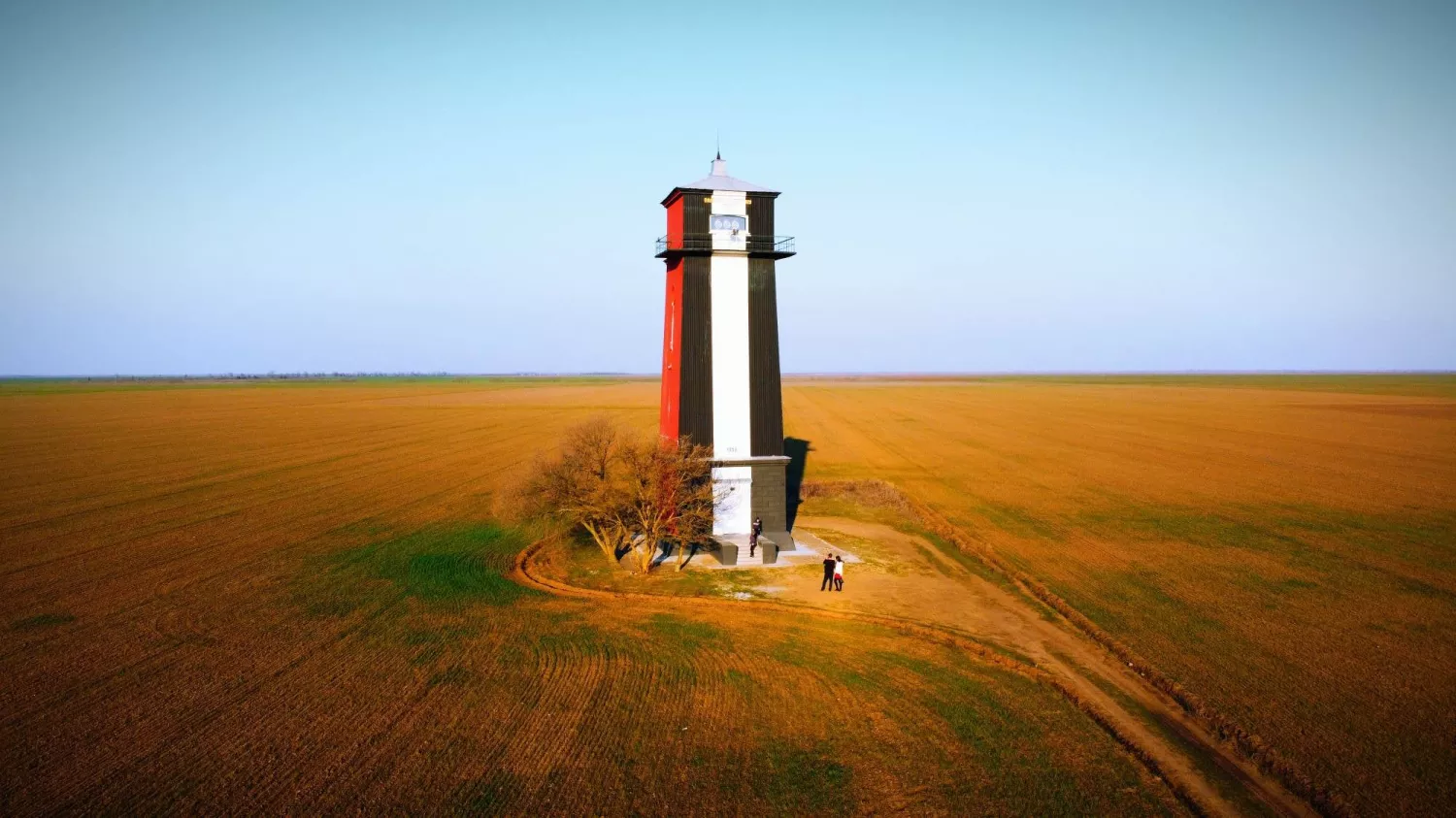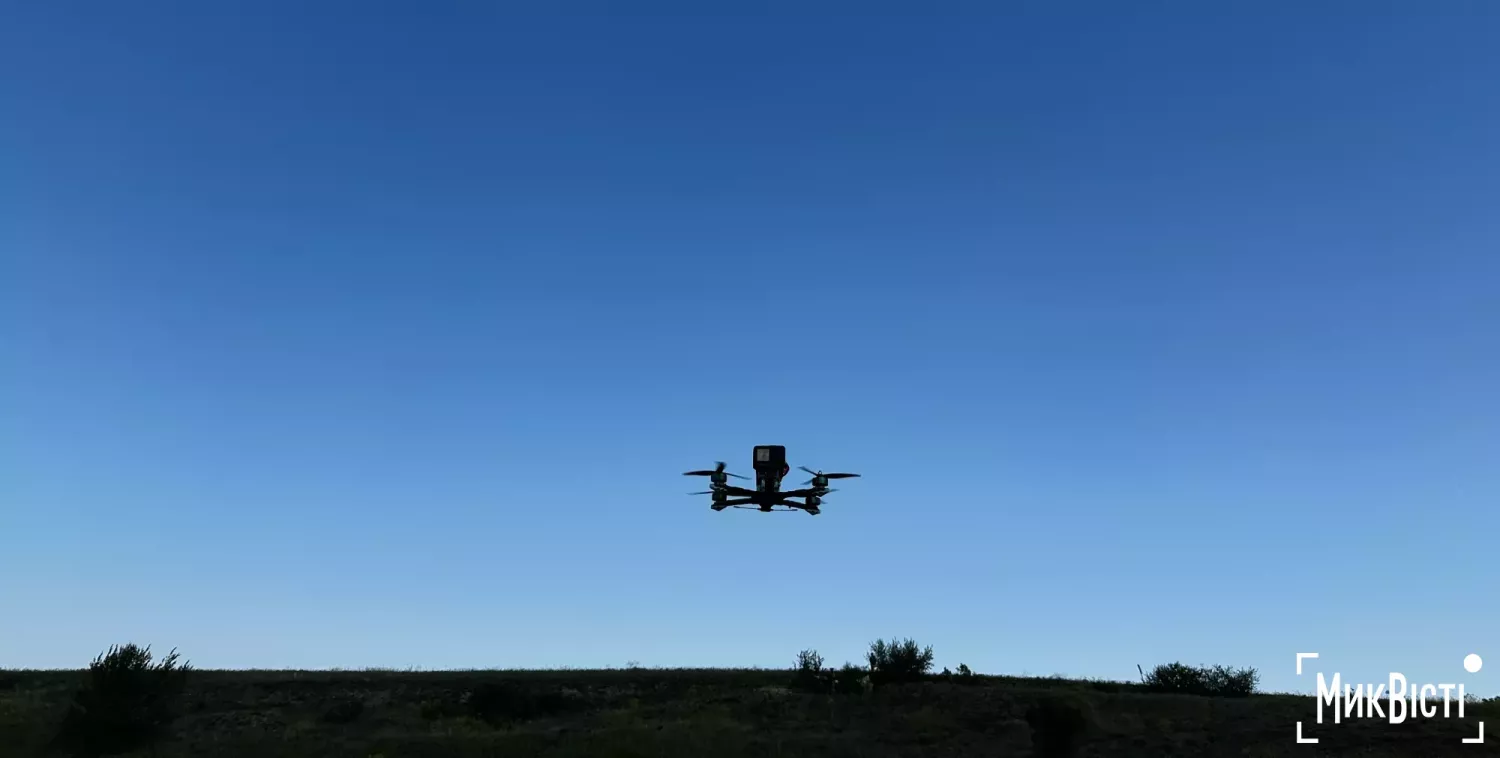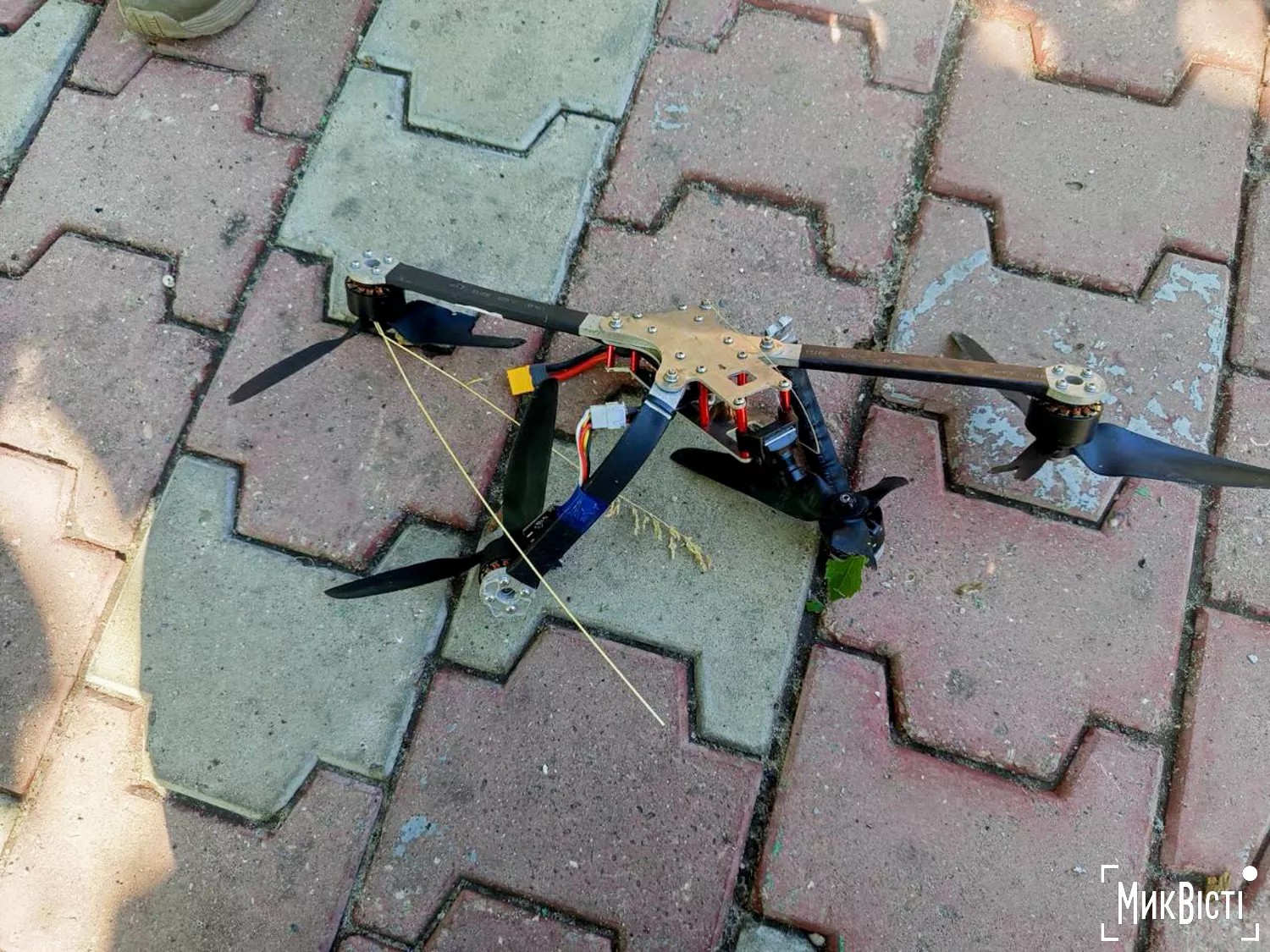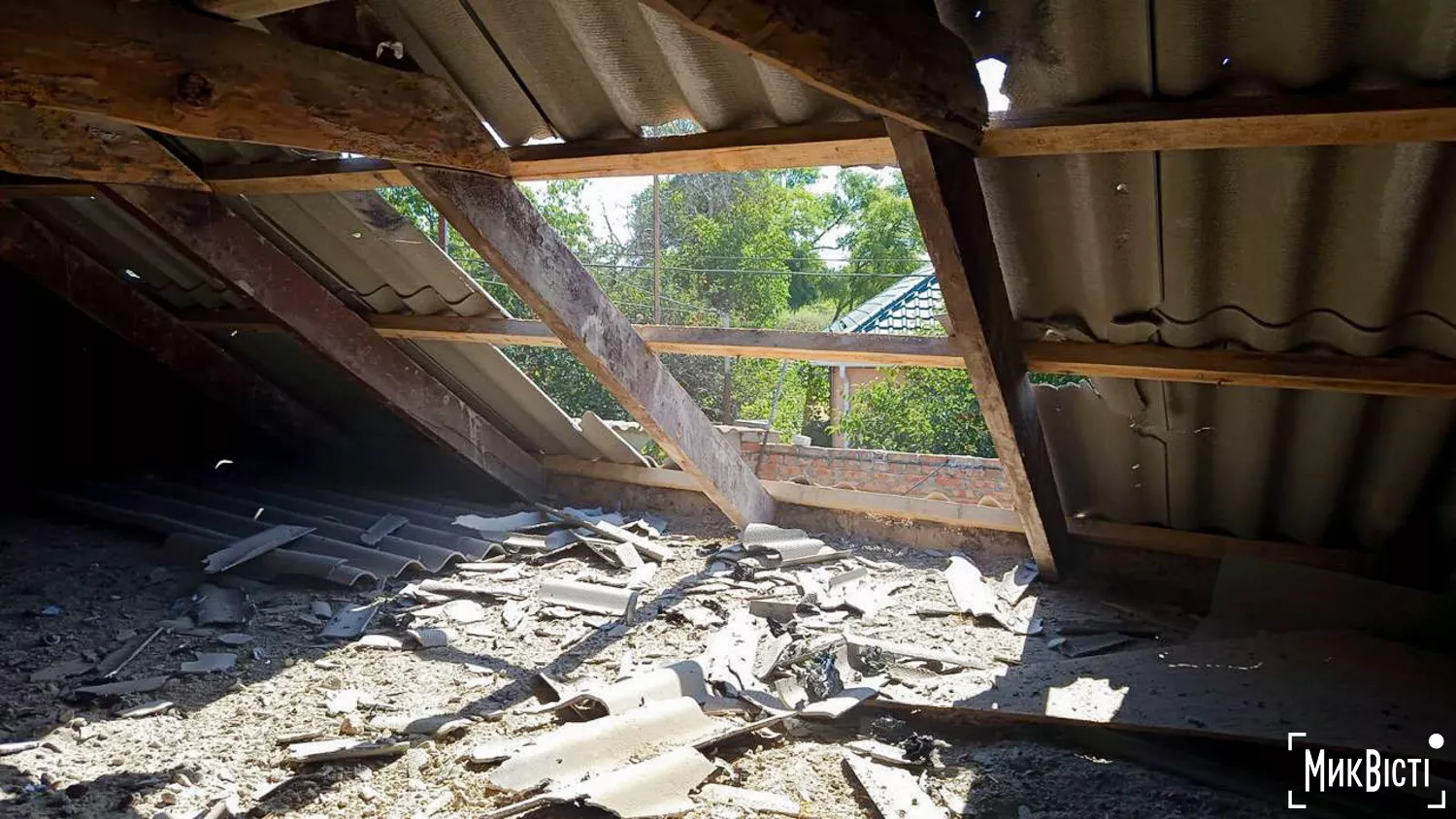«We were driving а Zhiguli when a drone chased us». How enemy FPV strikes on civilians in the Mykolaiv region are being investigated
- Yuliia Boichenko
-
•
-
13:57, 17 November, 2025
«Enemy FPV. Beware!» — dozens of such messages a day can be found in local telegram channels alerting people to similar threats in Mykolaiv region.
If it is followed by «without further fixation», it almost always means that the Russian FPV drone is already somewhere at the bottom of the estuary and you can exhale.
Currently, villagers in three communities in the region are suffering from such attacks: Ochakiv, Kutsurub and Halytsynove. The Russian military launches FPV drones from the territory of the occupied Kinburn Spit. If the drone manages to fly across the estuary, they organise «safaris» on civilians.
We collected stories of people who survived these attacks, and also found out how such cases are investigated and whether they are already classified as «crimes against humanity», which was introduced into Ukrainian law only a year ago.
«We had nowhere to run». An FPV drone attacked a Zhiguli in the middle of the fields
16 September 2025:
Teacher Liudmyla and her neighbour's car was driving near the Khablivskyi lighthouse. It was a popular place before the full-scale war, where many people came to take Instagram photos.
They were driving along the road, on the stretch where the border between Mykolaiv and Kherson regions is located. In the back of the car they were carrying food, medicines and petrol to fuel the generator at home in case of power outages. They had bought all this in Mykolaiv and were on their way home to Oleksandrivka.
 The Khablivka Back Lighthouse, located on the border of Kherson and Mykolaiv regions, between the villages of Lupareve and Oleksandrivka. Photo: Yevhen Ulytskyi
The Khablivka Back Lighthouse, located on the border of Kherson and Mykolaiv regions, between the villages of Lupareve and Oleksandrivka. Photo: Yevhen UlytskyiBut their routine trip was interrupted by a Russian FPV drone flying along the road. At first, the drone flew past the car, says Liudmyla. But as soon as it saw a car with civilians, it turned around and started chasing them.
«We accelerated, but how fast can a Zhiguli go? We drove onto a dirt road because it was flatter. We had nowhere to run to. There were only two bushes along the road, not even trees. «The driver said to me: 'I'm going to stop now, and you run and jump into these bushes», Liudmyla said.
The car stopped, and as soon as she opened the door, an FPV drone took off less than half a metre away and caught up with their car.
«There was smoke immediately. My ear was blocked, blood appeared on my right side, and I felt pain. But most importantly, I realised I was alive», the woman said.
The explosion only shattered the glass and mirror in the car, all on the right side, where the Russian drone hit. This is the second time the driver's car has been damaged by an FPV drone. The first one burned down during a similar situation when the man was driving a medical worker to work in Stanislav.
«We were actually lucky», says the woman. «Only half of the FPV charge went off. That is, if it had exploded all over, it is not a fact that I would be telling you all this», she added.
The woman and her neighbour immediately went to the nearest hospital in Mykolaiv. There she was treated for a month and the police took her statement.
«After the blow, my ear hurt a lot. I lost 45% of my hearing. A piece of meat was torn out of my forearm. Now it is not a very nice scar. I also had a leg injury on the right side. Just two days ago I pulled out another piece of plastic from there. But we are alive and thank God», Lyudmila explained.
That day, another car was hit by an enemy FPV drone on this road. People there were less lucky, the woman says. The car burned down completely, but the people managed to escape.
«These are crimes, crimes against humanity, against ordinary people, pensioners, children. I just have no words, really. I have a student, she was just riding her bike in the village, in Oleksandrivka. She was hit by an FPV. The child's injury is more serious than mine. She recently had another surgery, and she has already undergone many. We need to talk about this. The world needs to know what they are doing», the woman said.
«I heard it buzzing and hid under a tree». FPV drone captures woman and teenager in the middle of the street in Ochakiv
27 September 2025:
Tatiana was walking home along a street in Ochakiv. The woman had just walked her daughter to the bus to Mykolaiv, where she is studying. Her husband was waiting for her at home.
«An air raid alert was given, but I ignored it. Suddenly I heard something buzzing in the sky. It was an FPV», she said.
She hid under a tree to «somehow protect herself» and at that moment the drone hit the house behind her.
«It flew into the window of the house. And all the debris flew at me and an 18-year-old boy who was walking behind me. My legs immediately felt bad. But I had a few metres to go home and I went to my cripple», says Tetiana.
 The Kinburn Spit can be seen on the horizon, from where Russian troops are shelling Ochakiv, photo NikVesti
The Kinburn Spit can be seen on the horizon, from where Russian troops are shelling Ochakiv, photo NikVestiThe realisation that she had been injured came to her after a passerby asked her if she was okay.
«I answered that I was fine. And he said there was a lot of blood behind me. And when I saw the blood, my legs started to give out. I couldn't walk any further», she said.
Her husband took her to the hospital. There she spent a month treating her injured leg and gave a statement to the police.
An 18-year-old man who was injured in an FPV drone attack was taken by ambulance to a local hospital. He received emergency treatment there and then was taken to a hospital in Mykolaiv.
«We did everything we could: we took a picture and restored the damaged phalanges. Then we called Mykolaiv and sent the child there», said Valerii Knitel, chief doctor of the local hospital.
«Within minutes». How quickly do law enforcement officers learn about FPV attacks and who documents them?
Such cases are primarily documented by the police, Anna Mykytenko, an expert on international humanitarian and international criminal law, told NikVesti. Less often, this can be done by representatives of the territorial community.
And then the Security Service of Ukraine and the police investigate the cases under the procedural guidance of the prosecutor's office, she explained.
«As a rule, each fact of a civilian object being hit by a law enforcement agency becomes known within minutes of the hit. This is recorded by drawing up a report of the inspection of the scene with a corresponding photo table and seizure of material evidence», the Mykolaiv Regional Prosecutor's Office explained to NikVesti.
In October 2022, the regional prosecutor's office established a department for combating crimes committed in the context of armed conflict.
«The prosecutors of the department specialise in international humanitarian law and have completed relevant training courses, during which they acquired specific skills in this specific area,» the prosecutor's office added.
They use legal means to collect information, they added:
- receive satellite images from the State Space Agency of Ukraine for Satellite Imagery;
- researching information in open sources (Telegram channels, videos and photos posted online, etc.).
What is «a crime against humanity» and why is it important for investigating FPV attacks
Recently, cases related to the shelling of civilians by FPV drones can be qualified as a «crime against humanity». This is a fairly new concept in Ukrainian law, says Anna Mykytenko. In the Criminal Code of Ukraine, this article can be found under the number 442-1. The Parliament adopted these changes in May 2024, effectively implementing the provisions of the Rome Statute, the main document of the International Criminal Court.
A crime against humanity is one of the most serious crimes under international law. It is not an individual case of violence, but a massive or systematic attack on civilians, explained Anna Mykytenko, an expert on international humanitarian and international criminal law. "That is, when killings, torture, persecution or other inhuman acts are not an accident, but part of the state's policy or practice.
This opens up new opportunities for Ukraine: we can document Russia's crimes as recognised by international law, and in the future demand punishment for the perpetrators not only in Ukrainian courts, but also in the International Criminal Court.
Currently, only four proceedings have been opened in Ukraine where FPV drone attacks are considered a crime against humanity, according to the Prosecutor General's Office's response to an information request NikVesti. Three were in Donetsk region, and one in Kherson region.
That is, none of them relate to Mykolaiv region. At the same time, more than 160 criminal proceedings have been registered here on the facts of FPV drone attacks on civilians, according to the response of the Mykolaiv Regional Prosecutor's Office to an information request NikVesti.
«Currently, pre-trial investigations are underway in more than 2,500 criminal proceedings on war crimes, but 99.9 per cent of them are classified as crimes under Article 438 of the Criminal Code of Ukraine «war crimes». Only one criminal proceeding was classified on the grounds of a crime under Article 437 — «crime of aggression», they added.
That is, there are hundreds of cases, but so far none have been qualified under the new article. All of them are being investigated under Article 438 — «Violation of the laws and customs of war».
One of these criminal proceedings is the murder of a resident of the village of Dmytrivka in the Kutsurub community in October 2024. A Russian FPV drone chased the man as he was riding his moped home along the street. The drone hit him near his house. When a police patrol arrived at the scene, Russian troops attacked their car with two more drones.
Law enforcement officers managed to find out the possible involvement of two Russian brigades based on the occupied Kinburn Spit.
What are the difficulties in the investigation?
From the investigative point of view, proving that an FPV drone attack is a crime against humanity is more difficult than it seems.
Firstly, it is necessary to show a large-scale or systematic nature. That is, that this is not a random strike, but part of a wider campaign: several similar attacks within the same community or by the same unit.
«But large-scale and systematic are not exactly mathematical indicators. We cannot say that we need to collect 100 or 200 cases to prove a crime. You can start proving it with three cases. Especially when we are talking about small communities. There may be a population of 200 people, but 20 of them have been affected by drones in one way or another. This already indicates to us that there may be a large-scale or systematic nature to the attack,» explained the expert on international humanitarian and international criminal law.
The second thing is to prove who is responsible. Because the launch of an FPV drone is not an artillery shelling with a clear point. The drone can be launched from tens of kilometres away, with the operator in a dugout or a car.
«It is necessary to build a chain of command: who gave the order, who executed it, whether the commander could have foreseen or stopped the crime. But this can really be difficult,» says counsellor Anna Mykytenko.
The new rule allows not only the perpetrators to be held accountable, but also the commanders who knew about such actions or failed to stop them. But it is not easy. To prove involvement, it must be shown that the person in question had the authority to control the actions of his or her subordinates.
«That is, you cannot simply say that the Chief of the General Staff is automatically responsible for every Russian soldier who is currently on Ukrainian territory. This has to be proved gradually. That is why this is a novelty that we need to learn to work with», the expert said.
The third is the collection of evidence. FPV drones often leave behind few material traces. Investigators use wreckage, satellite imagery, video, witness statements, even telegram channels where the Russian military posts videos of attacks.
Sometimes radio intercepts help — conversations where orders or instructions are heard: «shoot everyone you see». All this is put together to show the consistency of the actions of a particular unit.
«That is, in the aggregate of evidence, you can already see that, for example, a certain unit commits more such acts than another unit. Then you can see who the commander of that unit is, who was there. And then you can try to build this chain: the commander gave an order, certain soldiers carried it out, and this led to this number of wounded or dead», explained Anna Mykytenko.
The fourth problem is resources. There are thousands of crimes in Ukraine, and each requires a separate investigator, prosecutor, and judge.
«In order to systematically investigate cases such as crimes against humanity, there is a lack of money and people», says the advisor to the Prosecutor General's Office.
«The number of proceedings is huge — over 100,000. And there is definitely not a commensurate number of investigators and prosecutors who can deal with them. And I don't know for which state it can be feasible to handle such a large number of proceedings with such a large number of specialists,» says the expert on international humanitarian and international criminal law.
Creating a single database where all these proceedings would be stored also requires significant funds and cybersecurity guarantees.
«This is a lot of money. And here we also need to think about information security, that is, a database that cannot be hacked. Because if witness data is leaked, it will endanger the witnesses themselves,» explained Mykytenko.
Finally, the expert on international humanitarian and international criminal law notes that not all those responsible for these crimes will be punished.
«We are working to ensure that as many people as possible are brought to justice. But this will not be 100%, because it is impossible with a smaller number of registered crimes.
But in certain circumstances, we can probably still expect that it will be the majority, or the most brutal crimes, which are key to showing that accountability is coming», she said.
Ukraine has received an important legal tool, but does not yet have a mechanism to apply it effectively. FPV drones are a new weapon that international law has not yet had time to comprehend. And although the law now allows for such attacks to be classified as crimes against humanity, there is little practice of this.
For the communities in the south — Ochakiv, Kutsurub, Halytsynove— this is not just a legal issue. It is about justice and memory. It is about whether the state can name the perpetrators and punish them for attacks on civilians living a few kilometres from the frontline.
Because in the end, the main question remains: if crimes against humanity are what should show the scale of violence, do we have enough system to prove it?
Yuliia Boichenko, NikVesti




